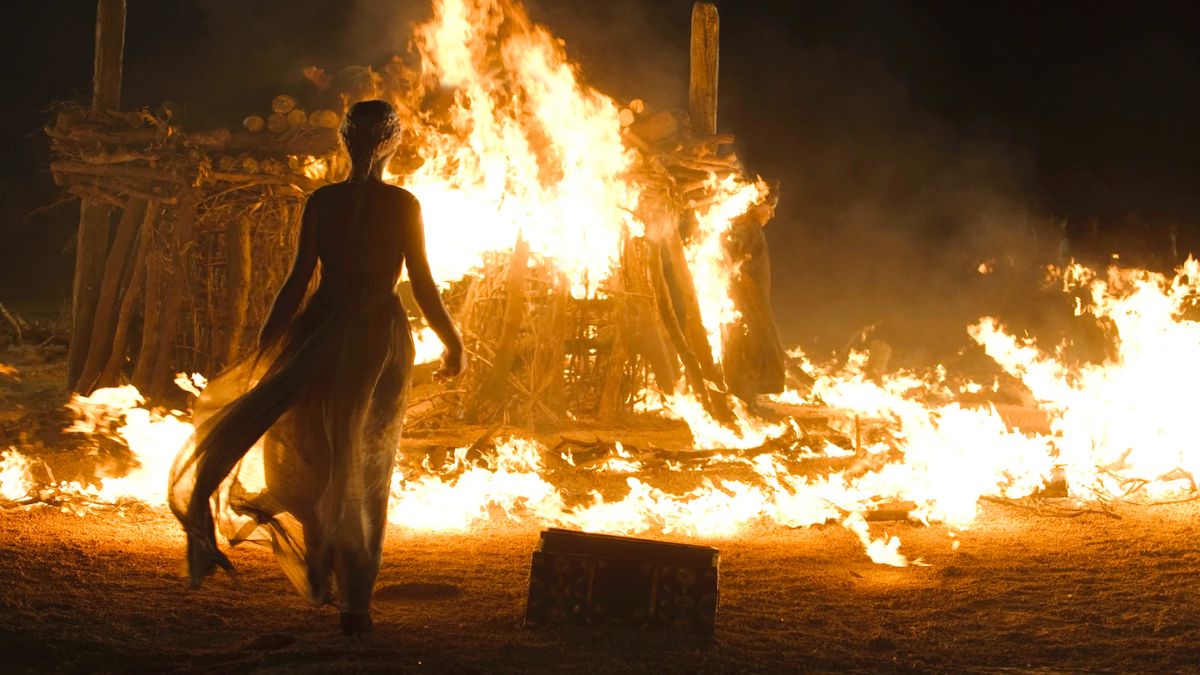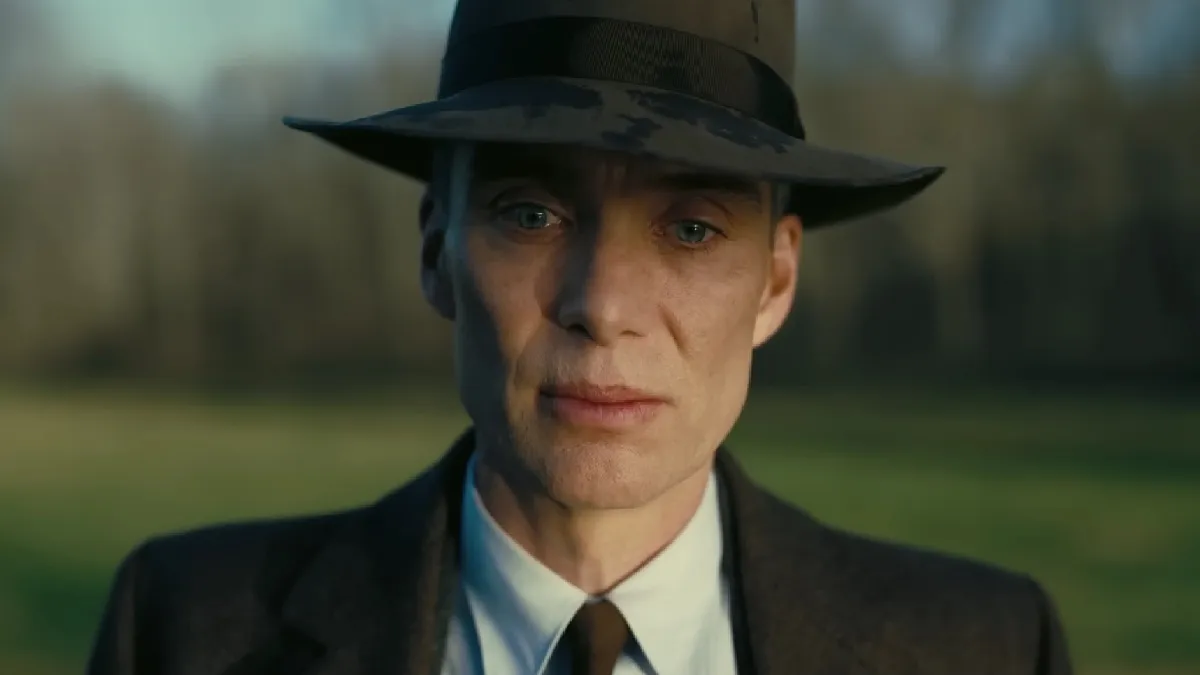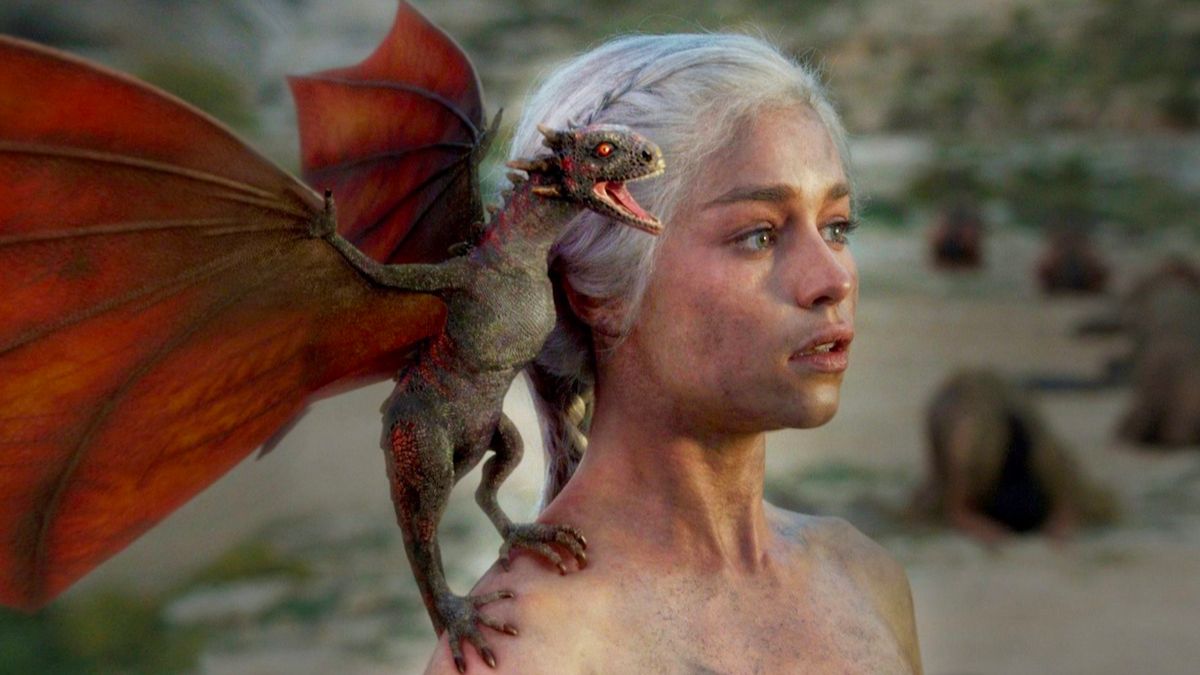Film and TV are the beating hearts at the center of American culture. But as the recent strikes have shown, the magic behind these productions doesn’t always go appreciated. Hundreds — in some cases thousands — of crew members, writers, and actors are employed on-set to ensure that everything goes smoothly so that the general audience has its share of entertainment.
So, to celebrate the hard work of these creatives, it’s time to take a look at ten moments that will have you believing in movie magic. Though these projects have wildly different aims and audiences, each and every selection is one which exemplifies the best the industry has to offer. They’re the kind of moments that have you sitting forward in your seat, mind fully entranced, heart racing as you feel the electricity of the moment course through your body.
Warning: This article contains spoilers for recent films such as Oppenheimer. Read at your own risk.
Game of Thrones — Daenerys hatches the dragon eggs

Game of Thrones had a weak ending by most people’s reckoning. Let’s get that out of the way. But, the series features some of the most impactful and cinematic scenes ever aired on television, especially early on in season one’s finale, “Baelor,” which features one of the most powerful climactic moments.
Viewers witnessed Daenerys Targaryen (Emilia Clarke) grow from a timid, abused child into a powerful figure in her own right, only to have everything taken from her. In a sequence that truly encapsulates what filmmaking is all about with all of its grandeur and emotional resonance, Daenerys steps into a burning pyre on which her dead husband, Khal Drogo (Jason Momoa), and the still-alive witch Mirri Max Duur (Mia Soteriu), who had just betrayed her, are tied.
Soteriu’s baleful cries are befitting her scene-stealing performance. Her melody turns into screams as the flames consume both her and Daenerys, and when the fire finally clears, the audience witnesses something incredible: Daenerys has survived the fire. Curled up into the fetal position, she stands, revealing three dragons clinging to her. As her subjects bow in reverence, her dragons roar, and the world comes alive with the sound of dragons once more. It’s a powerful sequence that could only be done justice elsewhere in George R.R. Martin’s original prose. Clarke is regal and triumphant, giving viewers a taste of why her character inspires such fervor — you can almost feel the religious experience the characters are locked in.
Lord of the Rings: The Return of the King — The end of the Third Age
The Battle of Pelennor Fields and the Battle of the Morannon will go down as some of the definitive battles ever created in a film. In an absolutely epic conclusion to the Lord of the Rings saga, the Fellowship of the Ring finally reaches its destiny as the forces of Sauron attack the realms of men.
Tolkien’s works were once considered unfilmable, but Peter Jackson proved the naysayers wrong. The sheer amount of spectacle in both battles is awe-inspiring, with a sense of scale that feels truly mythical, but at the same time, Jackson also makes sure to not lose track of the emotional beats.
Aragorn (Viggo Mortensen) finally becomes the King he was meant to be. Éowyn (Miranda Otto) slays the Witch King, ironically proving that no man or woman born would ever slay him. Sam (Sean Austin) carries Frodo (Elijah Wood) when his dear friend can no longer go on. It’s the perfect capstone to a saga that’s one of the all-time greats.
Stranger Things — Max keeps ‘Running Up That Hill’
One of Stranger Things’ greatest strengths is its cast of fully-realized characters, a feat accomplished thanks to clever writing and stellar performances. Max (Sadie Sink) may be a newer addition than some of the other characters, but Sink has held her own since her debut in season two and went on to become one of the standout performers of season four.
In “Dear Billy,” viewers finally get a glimpse of Max’s internalized trauma. As Max reads a letter at the grave of her departed stepbrother, Billy (Dacre Montgomery), the season’s villain, Vecna (Joseph Campbell-Bower), draws her into a nightmarish world where his will is the law.
But in a last-minute attempt to save Max, her friends realize playing “Running Up That Hill” by Kate Bush, Max’s favorite song, can break her out of Vecna’s spell. What follows is a tense, but emotionally resonant moment, in which Max decides that she wants to fight to live. As she runs from Vecna, Bush’s soothing voice empowers Max to save herself. It speaks to the power of music in a scene — and it works on a narrative level because music has always been woven into Stranger Things’ DNA.
Oppenheimer — A world of dominoes

It may be recent, but Oppenheimer has already proven itself as one of Nolan’s most thought-provoking works. Nuclear weapons are one of the greatest existential threats that our planet has ever faced, but throughout Oppenheimer, it’s clear that Nolan is more fascinated with the thought processes of the man behind their creation.
Cillian Murphy’s work as J. Robert Oppenheimer will surely be nominated at the Academy Awards. Nowhere is his performance better showcased than in the final scene of the film; in that moment, Albert Einstein (Tom Conti) speaks with his fellow physicist and wonders about what his own legacy has led to. Oppenheimer then ponders his conversation with Einstein. He recalls a conversation with the elderly scientist about the Trinity test potentially igniting the Earth’s atmosphere and destroying the world in the process.
Oppenheimer finally admits that he believes he did, in fact, start a chain reaction that will destroy the world. As he says as much, images of nuclear warheads, fiery destruction, and massive loss of human life play over Oppenheimer’s gaze. A sobering ending, and one which demonstrates the ways in which film can shape public conversation.
Back to the Future — The power of love
Back to the Future is a masterpiece of a blockbuster. The comedic stylings of Michael J. Fox and Christopher Lloyd, an eclectic duo, work together marvelously in this offbeat sci-fi comedy. It also features one of the greatest and most iconic third acts of all time.
As a result of altering history by disrupting his parent’s chance meeting, Fox’s Marty McFly is fading into oblivion. He only has one shot to save himself (and his siblings): the local high school dance. Marty finds himself conscripted into the band after one member hurts himself, and as he plays “Earth Angel,” he begins to fully fade away until his parents finally kiss. An absolutely action-packed finale follows, with Marty performing his own rendition of “Johnny B. Goode,” a too-close-to-call return to the ‘80s, and a race to save Doc Brown.
It’s a densely packed final act that manages to never lag. Each scene flows flawlessly into the next. It’s the absolute pinnacle of what blockbusters are capable of.
Barry — Barry’s motorcycle chase
Barry is a satirization of the industry as a whole, but it also features loving odes to what came before. The series crosses genre boundaries frequently, and Bill Hader’s deft direction in this scene reveals a hidden talent for chase sequences.
Barry had some truly memorable action sequences, but this one takes the cake. As Barry (Hader) drives to meet up with a deceased friend’s wife, he’s chased down by assassins hot on his trail.
And yet, for all of the tension in the scene, Hader still manages to inject a level of levity and dark comedy that could be jarring in the wrong hands. That’s Barry in a nutshell — you never know what’s going to happen next.
The Truman Show — “Good afternoon, good evening, and good night.”
Fiction exists in an elevated reality. Once you suspend your disbelief, you can come to realize that a film’s plot — no matter how absurd — can still hold incredible value and meaning. The Truman Show is a prime example of these high-concept plots.
It’s a movie that’s been called eerily prescient. Although viewers scoffed at the notion that anyone would want to watch a 24/7 live feed of Jim Carrey’s Truman Burbank, the dawn of the 21st century eventually made media so accessible as to be omnipresent, and the concept of a 24-hour live stream is pretty tame today.
The character of Truman Burbank is brilliantly acted and written. Both sympathetic and all too human, Truman’s journey throughout the film is one of the hardest-hitting character arcs in the last 25 years. His escape from his constructed reality and into the real world marks the perfect end to a movie that’s about movies.
The Iron Giant — Superman
If anyone ever tells you animation isn’t art, they’ve simply abandoned all sense of whimsy, wonder, and maybe even taste. Every frame is a painting, everything is deliberate, and everything is cared for at the minutest level. Cartoon movies like The Iron Giant may be aimed at a family audience, but never underestimate their value.
The Iron Giant tells the story of a giant, killer robot sent from outer space to wipe out humanity. Luckily, that robot hits his head upon his arrival, resetting his programming. With the help of Hogarth (Eli Marienthal), a 12-year-old boy, the killer robot forms a personality of his own. Vin Diesel’s performance of the Iron Giant is childlike and wide-eyed, and he expresses a depth of emotion that most would struggle to achieve.
The climactic sequence features the Iron Giant hurtling toward a nuclear warhead in order to save Hogarth and his hometown. As he flies through the air, arms raised, the Iron Giant recalls the DC superhero Superman. It’s rare to see a ‘Friendly AI’ story in adult works, and The Iron Giant shows that ‘family-friendly’ doesn’t mean ‘lesser.’
Coraline — Escape from the Other Mother
Claymation is a technical art form that doesn’t get as much love as it should. The genre has grown in complexity over the last decades; so much so that you’d be hard-pressed to find a genre more consistent in quality. When you keep in mind the level of detail and work that has to go into creating every shot, it makes scenes like Coraline’s escape from the Other Mother all the more impressive.
The movie’s brilliant designs are on full display as Coraline escapes from the Beldam. The fairy witch turns into a giant spider with a flawless transformation, and Coraline must escape from her web. The interplay of light in the tunnel adds flair to the horror — you can really feel that this is some sort of dark fairy tale.
Coraline as a whole is a technical marvel. Laika Studios has never put out a bad film, and its projects are some of the best examples of the Claymation genre.
Breaking Bad — All Hell breaks loose
For five seasons, Walter White (Bryan Cranston) was able to keep his double life as a drug dealer secret. When Walt’s brother-in-law Hank (Dean Norris) finally cracks the case and realizes that Walter White is Heisenberg, the series enters its final phase.
The gripping drama hypnotized audiences with Cranston’s performance. Cranston runs through the gamut when Walt’s plans are finally, permanently foiled as Walt can only look on while Hank is killed, a direct result of his actions. Breaking Bad’s final story comes into being at that moment. Every event in the series had led up to this. And it delivered beyond our wildest dreams. Hank’s death is one of the most emotional, narratively satisfying, and shocking plot developments to come out of TV.










Published: Aug 12, 2023 02:34 pm